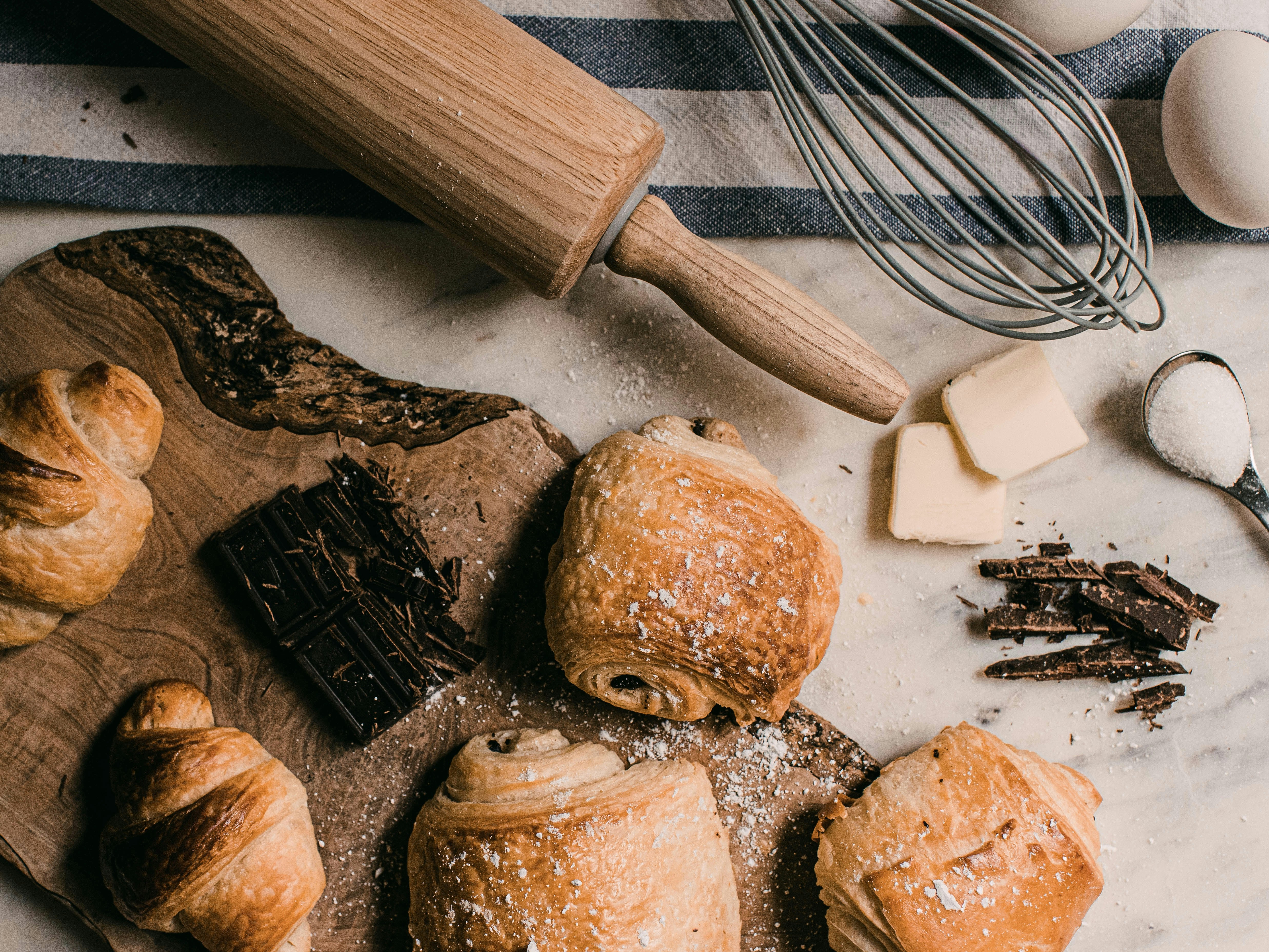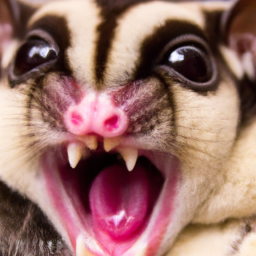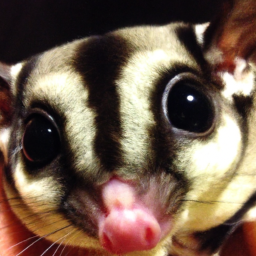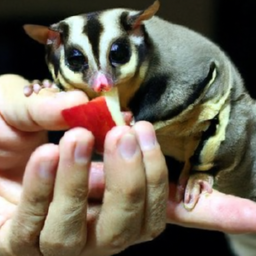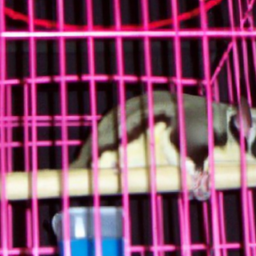How Long Does It Take A Sugar Glider To Bond
Welcome to this article where we’ll discuss how long it takes for a sugar glider to bond with its owner. If you’re considering getting a sugar glider as a pet or already have one but are struggling to establish a strong bond, you’ve come to the right place. In the following paragraphs, we’ll explore the factors that can affect the bonding process and give you some tips on how to speed it up. So, let’s get started and learn more about this fascinating topic!
When it comes to bonding with a sugar glider, patience is key. It typically takes anywhere from a few weeks to a few months for them to fully bond with their owners. The process can be shorter if you have the time to invest in daily interaction and socialization. Remember, each sugar glider is unique and will require different amounts of time to feel comfortable and secure around you. By providing a consistent and loving environment, offering treats, and spending quality time with your glider, you’ll be well on your way to building a strong bond together.
Understanding Sugar Gliders
Sugar gliders are small, nocturnal marsupials native to Australia and Indonesia. These adorable creatures have become popular pets due to their unique characteristics, including their ability to glide through the air using a membrane called a patagium. However, owning a sugar glider requires dedication and patience, especially when it comes to bonding with these small mammals. In this article, we will explore the factors that affect the bonding time, the process of bonding, common challenges, tips for successful bonding, and the benefits of establishing a strong bond with your sugar glider.
Factors Affecting Bonding Time
Age of the Sugar Glider
The age of your sugar glider plays a significant role in determining how long it takes for them to bond with you. Young sugar gliders, known as joeys, tend to bond more quickly compared to adult gliders. Joeys are more receptive to their surroundings and are curious about their environment. On the other hand, adult sugar gliders may take longer to establish a bond, as they might have had previous socialization experiences or may be more cautious and hesitant.
Previous Socialization
If your sugar glider has had previous socialization experiences, it may either facilitate or hinder the bonding process. Sugar gliders that have been properly socialized with humans from a young age tend to be more comfortable with human interaction and bonding. However, if your sugar glider has had negative experiences with humans in the past, it may take additional time and effort to build trust and establish a bond.
Owner’s Approach and Time Devoted
Your approach and the time you devote to bonding with your sugar glider also impact the bonding process. Spending quality time with your glider on a daily basis is crucial for developing trust and building a bond. Consider setting aside specific bonding sessions and being consistent with them. Patience is key, as it may take several weeks, or even months, for your sugar glider to feel comfortable and secure enough to bond with you.
Environment and Living Conditions
The environment in which your sugar glider lives can affect its ability to bond with you. A calm and quiet environment free from excessive noise and stressors can help your glider feel more at ease. Additionally, providing a spacious and enriched living space with plenty of hiding spots, toys, and opportunities for exercise can enhance your glider’s overall well-being and comfort, fostering a stronger bond between you and your pet.
Process of Bonding
Building Trust
Building trust is the foundation of bonding with your sugar glider. To establish trust, it is important to take a gentle and patient approach. Begin by spending time near your glider’s cage, talking softly and offering treats. Gradually, you can start placing your hand inside the cage, allowing your glider to sniff and investigate at its own pace. Never force your glider to interact with you; let it approach you voluntarily.
Handling and Taming
Once your sugar glider becomes comfortable with your presence, you can begin the process of handling and taming. Start by offering treats from your hand, allowing your glider to associate your scent and presence with positive experiences. Eventually, you can introduce more physical contact, such as gently scooping up your glider with your hand or using a bonding pouch. Always handle your glider gently and avoid sudden movements or loud noises that can startle it.
Establishing Social Interaction
Social interaction is essential for bonding with your sugar glider. Spend time outside of the cage with your glider, allowing it to explore its surroundings while supervised. This can include providing a safe glider-proofed room, where the glider can crawl on you, climb on furniture, or play with toys. Engaging in interactive play, such as using toys or providing treats, can strengthen the bond between you and your glider.
Creating a Bonding Routine
Creating a bonding routine helps establish consistency and predictability, which can make your sugar glider feel more secure. Schedule daily bonding sessions at the same time each day, allowing your glider to anticipate and look forward to spending time with you. Be patient and understanding, as bonding with a sugar glider is a gradual process that requires time and commitment.
Signs of Bonding
Increased Comfort and Trust
As the bonding process progresses, you will notice your sugar glider becoming more comfortable and trusting around you. It may display relaxed body language, such as spreading its wings and tail, and approach you willingly without hesitation. Your glider may also seek physical contact by climbing onto your hand or shoulder.
Gliding and Playfulness
A bonded sugar glider may exhibit playful behavior, including gliding from one point to another. Gliding is a natural behavior for sugar gliders and indicates a level of comfort and confidence in their surroundings. Playful behavior, such as hopping and jumping, is also a positive sign of bonding.
Grooming and Snuggling
Sugar gliders often groom each other as a social bonding behavior, so if your glider begins to groom your fingers or face, it is a sign that it sees you as part of its social group. Snuggling up against you or seeking warmth and comfort by nesting in your clothing or bonding pouch is another indication that your glider has established a bond with you.
Response to the Owner’s Voice
Bonded sugar gliders may respond to their owners’ voices by making chirping or clicking sounds. This vocalization signals recognition and affection towards their human caregivers. Additionally, they may follow your voice or look in your direction when you call their name.
Common Challenges
Fear and Stress
Sugar gliders are sensitive animals, and fear and stress can impede the bonding process. Loud noises, sudden movements, and unfamiliar environments can cause your glider to feel anxious and distrustful. It is important to create a calm and safe environment for your glider and avoid situations that may trigger fear or stress.
Aggression and Biting
While sugar gliders are generally docile, they may display aggression if they feel threatened or territorial. Biting is a defensive behavior and can occur if your glider is scared or uncomfortable. It is essential to handle your glider gently and respect its boundaries to avoid provoking aggression. If aggression persists, consult with a veterinarian or an experienced sugar glider owner for guidance.
Separation Anxiety
Sugar gliders are social animals and may experience separation anxiety if they are left alone for extended periods. This can manifest as vocalization, excessive grooming, or destructive behavior. Providing ample social interaction and mental stimulation can help alleviate separation anxiety.
Tips for Successful Bonding
Patience and Consistency
Bonding with a sugar glider takes time, so it is essential to be patient and understanding. Each glider has its unique personality and may require more or less time to bond. Consistency is key; dedicate regular bonding sessions and stick to a routine to establish trust and familiarity.
Positive Reinforcement
Positive reinforcement is a valuable tool in encouraging bonding with your sugar glider. Reward desired behaviors, such as approaching you voluntarily or displaying trust, with treats or praise. Avoid punishing or scolding your glider, as it can damage the trust-building process.
Providing a Safe and Enriching Environment
Creating an enriched environment is crucial for the well-being of your sugar glider and can help facilitate bonding. Provide a spacious cage with appropriate bedding, a variety of toys, and hiding spots. Encourage exploration and mental stimulation by offering branches, ropes, and puzzle toys. A safe and stimulating environment can build confidence and trust in your glider.
Seeking Professional Help
When Bonding Takes Longer Than Expected
If the bonding process with your sugar glider is taking longer than expected or seems to be stagnant, it may be beneficial to seek professional help. A veterinarian or an experienced sugar glider owner can provide guidance and advice specific to your glider’s needs. Sometimes, a fresh perspective and expert knowledge can help overcome any challenges that may arise during the bonding process.
Behavioral Issues and Solutions
If your sugar glider exhibits persistent aggressive or fearful behavior, it is important to address the issue promptly. Consulting with a veterinarian or a certified animal behaviorist can provide insight into the underlying cause of the behavior and help develop a personalized plan to address it. Remember, seeking professional help is not a sign of failure but rather an investment in your glider’s well-being.
Reaping the Benefits of Bonding
Creating a Strong Emotional Connection
Establishing a strong bond with your sugar glider can lead to a deep emotional connection. As your glider becomes more comfortable and trusting, you will experience the joy of a unique pet-owner relationship. Sugar gliders are capable of forming strong attachments to their owners and can provide companionship and affection.
Enjoying Interactive Play
Bonded sugar gliders are more inclined to engage in interactive play with their owners. This can involve playing with toys, gliding from one person to another, or simply crawling on you. Interactive play not only strengthens the bond between you and your glider but also enhances their physical and mental well-being.
Health and Well-being Benefits
When sugar gliders feel secure and bonded with their owners, their overall health and well-being improve. A strong bond can reduce stress levels, promote a healthy appetite, and encourage regular exercise. Additionally, a bonded sugar glider is more likely to accept routine health checks and grooming procedures, making it easier to provide necessary care.
Can Bonding Time with a Sugar Glider Affect the Need for Nail Trimming?
Bonding time with a sugar glider can definitely affect the need for nail trimming. Regular handling and interaction can help naturally wear down their nails, reducing the frequency of nail trimming. But knowing how to trim sugar glider nails is still important for maintaining their overall health and well-being.
Conclusion
Bonding with a sugar glider is a process that requires time, patience, and understanding. By focusing on building trust, engaging in regular bonding sessions, and providing a safe and stimulating environment, you can create a strong and fulfilling relationship with your sugar glider. Remember, each glider is unique, and the bonding process may vary in length. Embrace the journey and enjoy the rewards of a deep and meaningful connection with your adorable sugar glider.



